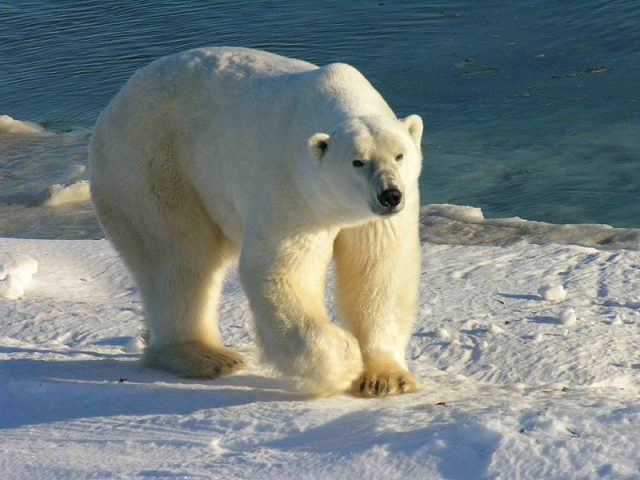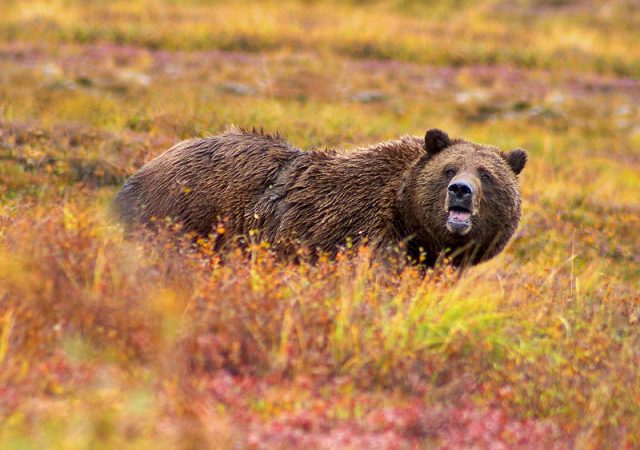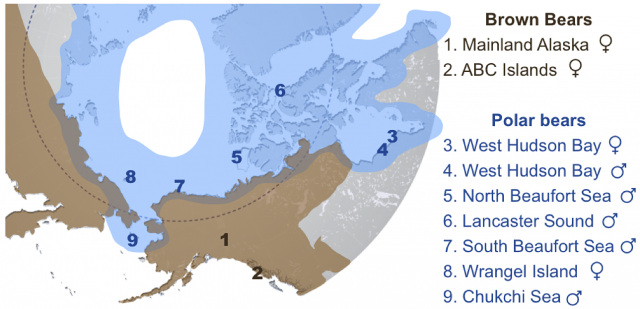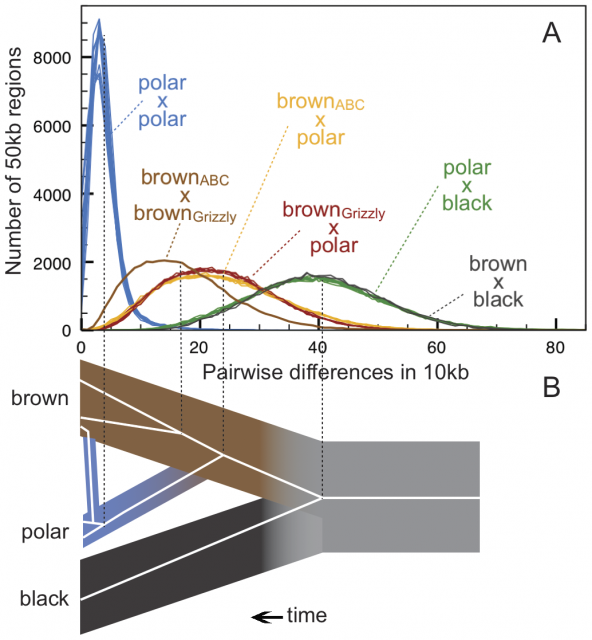Bears and riddles
You’re sitting in a room with an all-southern view. Suddenly, a bear walks by the window. What color is the bear?
Young Sherlock Holmes. Barry Levinson (1985)
The polar bear (Ursus maritimus) is one of the most unmistakable mammals of the planet. Its white fur is maybe the most straightforward reason for this distinctiveness, but nevertheless they show many other characteristics that make them true “outsiders” of the bear lineage, both from an anatomic and ecological perspective. Without a doubt living on the arctic ice and an almost strictly carnivorous diet is the reflection of an intense selective pressure that made possible the existence of this extraordinary animal with a unique ecological niche. Despite this apparent uniqueness, however, the evolutionary history of this bear is not a straightforward issue.

We know that the closest living relative of the polar bear is the brown bear (Ursus arctos). The deep morphological and ecological differences may suggest a relatively old speciation event, but hybridization between brown and polar bears are known to occur both in the wild and in captivity suggesting a recent divergence. Molecular phylogenetic studies allow evidence for different scenarios. The mitochondrial genome of polar bears apparently falls within the variation range of brown bears and the split between both branches was estimated to be very recent (160,000 years ago). However, different studies targeting other genomic loci concluded that polar bears are genetically very distinct (with different degrees of interspecific genetic admixture) and set the last common ancestor of both lineages in a wide interval between 0.6 and 4 million years ago. Immersed in this controversy, some particular populations seem to have something interesting to say about this story: the bears of the Admiralty, Baranof and Chichagof Islands (ABC).
The ABC Islands belong to the Alexander Archipelago, very few kilometers off the southeastern coast of Alaska. Bears of these islands look like brown bears: they have dark fur and catch jumping salmons in the streams, but their mitochondrial genome is identical to the polar bears’, which are absent within a 1200-km radius! How is this possible? What are these bears? This reminds me the riddle posed by young Sherlock Holmes in that film of the 80’s that could be reformulated: “You’re sitting in a cabin at Admiralty Island. Suddenly, a bear walks by the window. What species does the bear belong to?” Since the mitochondrial genome is maternally inherited, it was suggested that the ABC brown bears were the direct ancestors of all the polar bears, but this hypothesis was not fully satisfactory and a number of additional ad hoc postulates were needed to make all the data coherent.

A recent study 1 addressed this and other open questions related to the evolution of polar bears. The authors extracted genomic material from seven polar bears, a “typical” brown bear from central Alaska, a brown bear from the ABC Islands and a black bear (Ursus americanus), used as outgroup. High-throughput sequencing techniques allowed the comparison of randomly chosen homologous bases in 42,000 non-overlapping 50 kb regions of the genome, resulting in several juicy conclusions.

Firstly, all the polar bears turned out to be genetically homogeneous and distinct enough from the brown bears. Moreover, the ABC bear was closer to the mainland brown bear than to its white relatives. Both, polar and brown species, were equally distant to the outgroup (black bear). This result does not allow a direct estimation of the age of the divergence of the polar bear, but would support the scenario of a classic, relatively old speciation event, since no evidence of modern brown bear ancestry was detected in polar bears.

The next question addressed is the degree of genetic admixture between the two species by means of the D-statistic. D was first used to find admixture between modern man and neandertals. It compares two conspecific individuals with a candidate admixing individual from other species, detecting biases of the alleles’ distribution. In other words: if the differences between the conspecific individuals and the admixing candidate are not significant (D=0), there is no evidence of admixture; conversely, a significant non-zero value of the statistic reveals a biased admixture towards one of the individuals. No admixture was detected when any two given polar bears were compared with any of the brown bears. However, when the ABC and the mainland brown bear were compared with all the polar bear specimens, the statistic showed always a significant non-zero value: the ABC brown bear was, genetically speaking, 0.75% polar. Interestingly, this admixture was higher in the X chromosome (6.5%).

This result was coherent with the previous knowledge of the identical mitochondrial haplotype of polar and ABC brown bears, but in order to ultimately resolve the riddle of the ABC bears another answer was needed: which is the direction of this admixture? Are the ABC bears ancestors or descendants of polar bears? This final question was addressed simulating random substitutions of 6.5% of the X chromosome sequence of a brown bear with homologous polar bear sequences and vice versa. Only the “polar to brown” simulations (polar ancestral) fitted the observed data, indicating that the ABC bears are the descendants, and not the ancestors of polar bears.

Now, here it comes my favorite part: a reconstruction of the story of the ABC bears consistent with all the results obtained in this study. Imagine the ABC Islands during the last glaciation. No brown bears are able to live in this frozen environment, but polar bears reached the southern coast of Alaska during this period of time. The ice would eventually retreat, and some polar bears would remain sheltered in these islands. With the postglaciar warming, it was a matter of time that brown bears reached these latitudes, and that the restless brown sub-adult males swam towards these exotic islands and eventually mated with the local polar females. A constant flux of brown immigrant males eroded the polar genome in that population until it was virtually transformed into a brown bear population! The traces of a noble, arctic ancestry remained imprinted particularly in some regions of the genome: the mitochondrial DNA (maternally inherited) and also, in a lower degree, the X chromosome (with two copies in the female bears).
There are two aspects I especially like from this study. The first one is how we can go beyond hypotheses and postulates and reach instead reliable reconstructions of evolutionary processes thanks to a smart analysis of the data. The idea of a polar bear population being constantly visited by brown male immigrants until their offspring became genuine brown bears may sound striking, but at the same time it is strongly supported by genetic evidence, no matter how extraordinary it seems. The second interesting idea is related with the so called “species problem”. Species delimitation has relied very often on short, partial and limited definitions (species concepts) of a very complex reality. Thinking about the case of the ABC Islands bears should prevent us to adopt essentialist and narrow-minded perspectives on how we should understand the discontinuities of life on Earth.
References
- Cahill, J. A., Green, R. E., Fulton, T. L., Stiller, M., Jay, F., Ovsyanikov, N., Salamzade, R., St. John, J., Stirling, I., Slatkin, M. & Shapiro, B. 2013. Genomic Evidence for Island Population Conversion Resolves Conflicting Theories of Polar Bear Evolution. PLoS Genetics9, e1003345 ↩
2 comments
Given that polar bears and brown bears hybridize, they should be considered as two races of the same specie. Anatomical differences should be considered like the same existing in dogs, such as the husky breed versus other breeds. Even in humans, attending to the “two species” clasification in bears, we could say that eskimos, from the point of view of “anatomic and ecological perspective”, are (or they were until recently) a different specie from native americans.
That conclusion relies on the assumption that the Biological Species Concept is “the” right and unequivocal rule for species delimitation, however this is far from a straightforward question. Hybridization is a very widespread phenomenon, much more frequent than it was thought in the past, and de facto does not constitute a consistent criterion for that purpose.